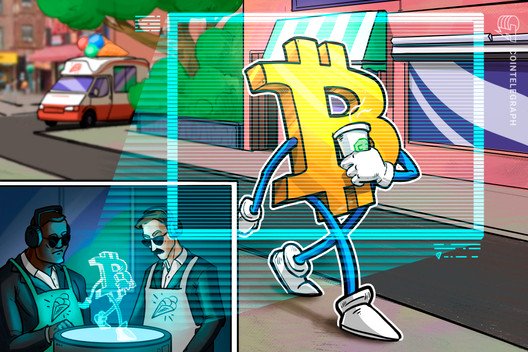XRP Ledger blockchain energizes decarbonization, but tokenization a challenge
As tech giants like Google and Facebook announce plans to become carbon-neutral businesses by 2030, smaller companies are doing the same. The only difference is that innovative startups are taking clever approaches that seek to be more effective than those implemented by large, centralized companies.
For example, Ripple — a fintech company that allows banks, payment providers and digital asset exchanges to send money using blockchain — has committed to becoming carbon net-zero by 2030. In order to meet this goal, Ripple has unveiled a set of initiatives driven largely by blockchain technology.
Ken Weber, head of social impact at Ripple, told Cointelegraph that Ripple focuses on reducing its carbon emissions by making sustainable choices, purchasing carbon offsets and investing in carbon-removal technologies. One of the first initiatives that Ripple has committed to is a partnership with the Energy Web Foundation, a nonprofit organization using blockchain to accelerate low-carbon electricity systems. The Energy Web Foundation and Ripple have created “Energy Web Zero,” a new open-source tool designed to enable any blockchain network to decarbonize by purchasing “tokenized” renewable energy.
Tokenizing energy attribute certificates
According to Weber, Energy Web Zero will enable Ripple to purchase renewable energy within the United States, the United Kingdom and the Philippines. This will be done via tokenized energy attribute certificates, or EACs, which serve as the company’s proof of purchase for its renewable energy procurement.
Jesse Morris, the Energy Web Foundation’s chief commercial officer, told Cointelegraph that the Energy Web Zero application establishes digital identities for real-world assets such as large-scale wind and solar facilities around the world. Once these assets are tied to a digital identity, that data is anchored to the Energy Web blockchain, which powers the Energy Web Zero application. Digital energy attribute certificates are then produced from this data to represent renewable energy.
Morris shared that Ripple and the XRP Ledger Foundation, an independent nonprofit entity, will be the first organizations to use Energy Web Zero to ensure offsets are purchased for consumption on the XRP Ledger. “We are using a blockchain to solve its own problems in a sense,” said Morris.
Benefits of blockchain in achieving carbon neutrality
Interestingly enough, blockchain being used to achieve carbon neutrality makes a lot of sense due to the transparency inherently baked into the technology. Companies like Google can claim to be eliminating their carbon footprints by purchasing high-quality offsets, yet they are not revealing what, and for what amount, those offsets are.
A public blockchain network will always have proof of the transactions taking place. According to Morris, the Energy Web chain is an open-source architecture, meaning anyone can download a client and start interacting with it or looking up transactions: “Open source platforms are critical for transparency and trust, which is the big difference here.”
Moreover, an open-source framework allows for the entire blockchain ecosystem to take advantage of the Energy Web Zero application for decarbonization. Morris noted that this is a goal, as the application is meant to encourage other blockchain ecosystems to start decarbonizing:
“Companies like Google and Facebook have impressive sustainability targets and can make decisions on how to achieve their goals, but given the decentralized nature of blockchain communities, we can’t do that. Therefore, using tokenized EACs across a blockchain network is a powerful way to get a decentralized ecosystem to purchase renewables to offset energy consumption.”
Tokenization and blockchain effectiveness?
Although the concept makes sense — and has even been implemented by companies outside the blockchain space — tokenizing energy attribute certificates and putting them on a blockchain network may be challenging due to unclear regulations and a lack of industry standards.
Cameron Prell, a climate markets lawyer and vice chair of the Sustainability Business Working Group of the InterWork Alliance — a nonprofit group aimed at creating global standards around tokenized ecosystems — told Cointelegraph that understanding whether or not tokenization is effective depends on whether or not the assets tie back to actual, credible, standardized carbon credits. Additionally, Prell mentioned that these tokenized credits should also provide better liquidity and price discovery than standard carbon credit instruments.
According to Prell, companies that want to manage their transition to net-zero climate commitments must treat their tokenized, environmental data as an asset with a market-defined value proposition: “The establishment and transactability of such value will require standardization, asset classification systems, and generally-acceptable climate accounting principles.” He further added:
“Tokenization thereafter empowers companies an ability to price, track and transact in their net zero performance, both to achieve their objectives in a credible manner, but also the ability to collateralize and secure forward any number of financial instruments to help scale and finance those efforts.”
While this may be the case, Weber said that the company is purchasing tokenized energy attribute certificates and holding them until they are retired. “We are not looking to trade or exchange them on a market in any way,” he said.
Echoing Weber, Paul Gambill, CEO of Nori — a climate-change startup that leverages blockchain — thinks it’s important to separate carbon credits from the method of payment or trading mechanism. Gambill told Cointelegraph that Nori allows anyone to purchase carbon certificates in the form of “Nori Carbon Removal Tonnes” — nonfungible tokens that are retired immediately by the buyers. The platform’s NORI token separately serves as the method of payment or trading mechanism. According to Gambill, this helps avoid double-counting carbon certificates that often trade hands many times over in legacy carbon registries.









